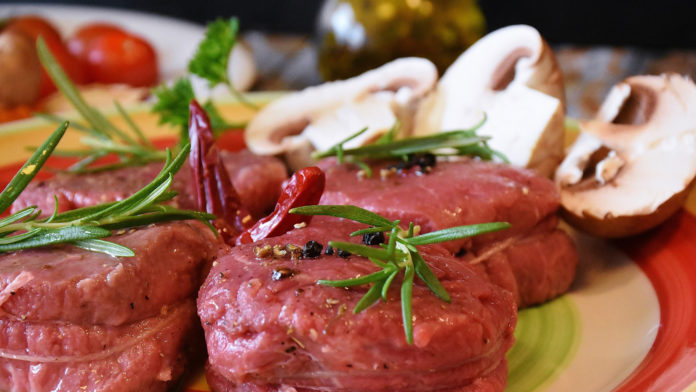Food can be contaminated with E. coli, and there is no way to tell by smelling it or looking at it.
To enhance food safety, engineers and biochemists at McMaster University developed Sentinel Wrap: a real-time sensing strip that can be placed face down onto food like meat or sliced fruit, giving off a fluorescent signal that can be scanned using a smartphone if E. coli is present.
Best of all, scanning an item can be done in an instant without having to open the packaging. If Sentinel Wrap gains regulatory approval, it will give distributors and supermarkets an easy way to ensure that every package they are selling is clean, and consumers peace of mind that the food they are about to eat is safe.
Sentinel Wrap provides more specific information than Best Before dates, and would even help track sources of contamination. Researchers confirmed that Sentinel Wrap can detect contamination on meat, water, milk, sliced apple and apple juice and published their work in ACS Nano.
E. coli can contaminate a wide variety of foods, including meat, fresh produce, and unpasteurized milk and juice.
Co-authors Tohid Didar and Hanie Yousefi explain the technology behind Sentinel Wrap.
Sentinel wrap is printed onto a thin and flexible strip of clear plastic using an inkjet printer. The printer deposits tiny picolitre-sized dots of a DNA-based sensor that is specific to E. coli. The sensor itself has a fluorescent probe attached to it, closely paired with a quenching probe that will absorb and block a fluorescent signal as long as the sensor stays intact.
If a particular target protein made by E. coli is present, the sensor releases the quenching probe, and the dots light up under UV light. This could be scanned using a dedicated handheld device similar to ones used to detect counterfeit bills, or a smartphone with a special filter.
Similar sensors could also be developed for other potential contaminants like salmonella or listeria. Beyond food safety, this technology could also be used in healthcare applications, such as wound dressings that detect infectious bacteria on skin, or test strips that could rapidly alert staff if C. difficile or MRSA are present on hospital surfaces.
The team hopes find industry partners to help them clear regulatory hurdles and get Sentinel Wrap on grocery store packaging in the next two years.








































